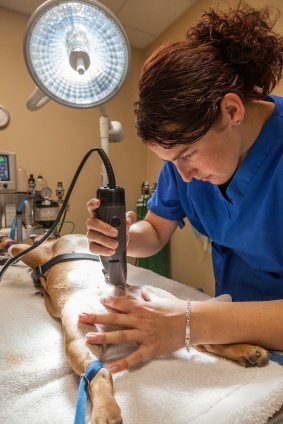Veterinary technicians can be found in a variety of settings including animal clinics and hospitals, shelters and humane societies, zoological parks, and aquariums.
They are responsible for a broad range of tasks such as administering vaccines, performing laboratory tests, cleaning teeth and assisting with surgical procedures.
Vet techs can assist with many different types of surgical procedures, and while most of these surgeries are minor, some can be quite complicated.
Additionally, the amount of surgery that veterinary technicians will need to help with varies depending on the type of facility and the clients’ needs at any given moment.
Preoperative and Prep Tasks
 Before any type of surgical procedure, it is essential for the veterinarian and vet tech to ensure that the animal will be able to withstand surgery.
Before any type of surgical procedure, it is essential for the veterinarian and vet tech to ensure that the animal will be able to withstand surgery.
Typically, it will be the vet tech’s responsibility to draw a blood sample and perform a blood chemistry to make sure that the animal’s liver and kidneys are functioning properly.
After all of the preoperative tasks have been completed, either the veterinarian or vet tech will give the animal a pre-anesthetic.
Once the pre-anesthetic takes effect, the veterinary technician will insert an IV catheter into the animal and place an endotracheal tube into the throat.
Next, the vet tech will place the animal on an anesthetic machine, shave the surgical site and clean the area with a surgical scrub solution.
It is at this time that the patient will be moved to the surgery room and placed on the surgical table. Finally, it is the technician’s responsibility to hook the patient up to monitoring equipment.
Tasks Necessary During Surgery
The veterinary technician has a very important role during surgical procedures.
It is the vet tech who must monitor the patient’s vital signs and make sure that they stay within the normal range. If there are any changes, no matter how small, the vet tech must alert the veterinarian right away.
It is also up to the veterinary technician to adjust anesthetic and IV fluid levels whenever necessary. Other tasks that are required during surgery may vary depending on the type of procedure being performed. For example, during a cesarean, the vet tech may be responsible for clipping umbilical cords and cleaning newborn animals.
Postoperative Tasks
Immediately after surgery, the veterinary technician will continue monitoring the patient until the anesthetic is turned off.
After the animal begins to wake up, it is the technician who will deflate and remove the endotracheal tube. If any post-op injections or medication is required, it is often the vet tech’s responsibility to administer them.
It is also extremely important for the vet tech to monitor the patient for several hours after surgery and report any changes in condition to the veterinarian.
Finally, it is typically the veterinary technician’s job to clean and sterilize surgical equipment and all surfaces of the surgery room after any surgical procedure.
As you can see, veterinary technicians are responsible for many essential tasks before, during and after surgical procedures.
From the moment people take their pets to a veterinarian for surgery to the moment they pick them up, there is a vet tech behind the scenes providing life-saving care to their cherished furry friends.
